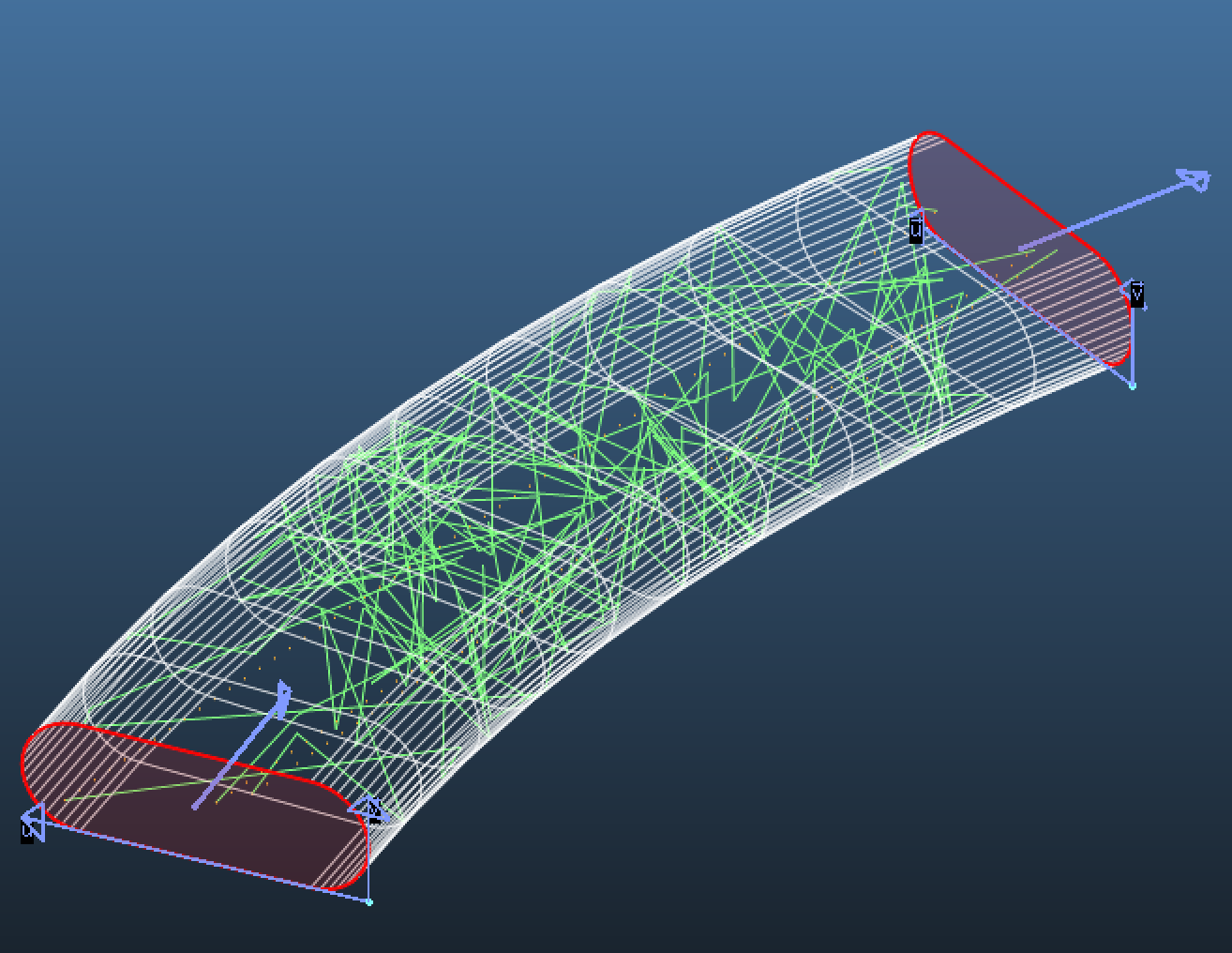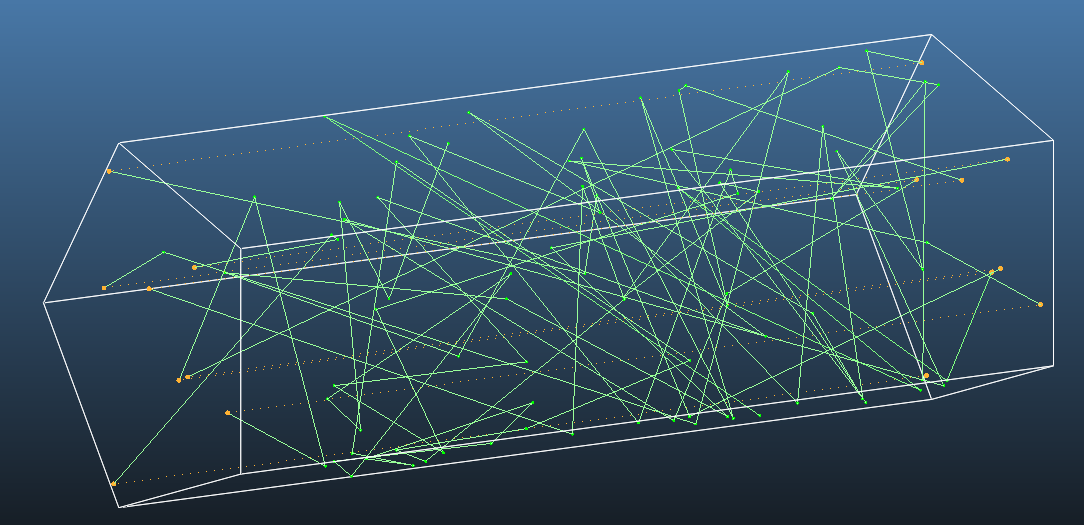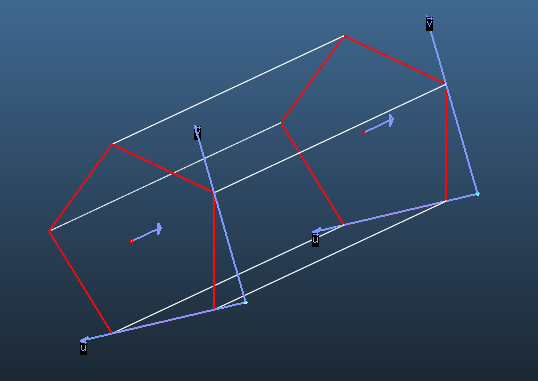Molflow allows you to simulate periodic structures by simulating only one structure and defining „teleport” boundary conditions on edges. Therefore, once a particle hits one end of the structure, it is transported (and its trajectory, if needed, rotated) back to the other side, thus simulating an infinite loop.
Though the principle is simple, several conditions have to be met to define such a structure in Molflow.
You have to have two teleport facets, that will teleport particles to each other. For the correct functioning of the teleport, the following conditions have to be met:
- Both facets have the same shape
- Both normals are pointing to the same direction
- Both U,V vectors point to the same direction
- If the above conditions are met, most probably one of the two facets will receive particles from its back side, thus it has to be two-sided
- Facet A must be a teleport to facet B (enter facet B’s number to the teleport facet parameter field)
- Facet B must be a teleport to facet A
Case of different source/target orientation

The particle trajectory will be recorded on the source relative to the facet U/V/N coordinate system (technically, a theta elevation and phi azimuth angle). They are then translated and rotated to the target facet. This means you can, for example, simulate curved periodic sections in a geometrically correct way.
You can download a simple teleport example where everything is set up correctly.

